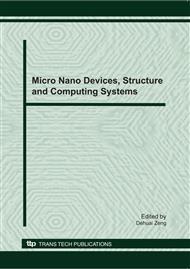[1]
Mladenic, D. Machine learning for better Web browsing. In: Rogers, S., Iba, W., eds. AAAI 2000 Spring Symposium Technical Reports on Adaptive User Interfaces. Menlo Park, CA: AAAI Press, 2000. 82~84.
Google Scholar
[2]
Pazzani, M.J., Muramatsu, J., Billsus, D. Syskill & Webert: identifying interesting Web sites. In: Weld, D., Clancey, B., eds. Proceedings of the 13th National Conference on Artificial Intelligence and 8th Innovative Applications of Artificial Intelligence Conference. Menlo Park, CA: AAAI Press, 1996. 54~61.
Google Scholar
[3]
Bollacker, K.D., Lawrence, S., Giles, C.L. Discovering relevant scientific literature on the Web. IEEE Intelligent Systems, 2000, 15(2): 42~47.
DOI: 10.1109/5254.850826
Google Scholar
[4]
Asnicar, F., Tasso, C. ifWeb: a prototype of user modelbased intelligent agent for documentation filtering and navigation in the World Wide Web. In: Tasso, C., Jameson, A., Paris, C.L., eds. Proceedings of the UM 1997 Workshop on Adaptive Systems and User Modeling on the World Wide Web. West Newton, MA: User Modeling Inc., 1997. 3~12.
DOI: 10.1007/978-3-7091-2670-7
Google Scholar
[5]
Mostafa, J., Lam, S.W., Palakal, M. A multilevel approach to intelligent information filtering: model, system, and evaluation. ACM Transactions on Information Systems, 1997, 15(4): 368~399.
DOI: 10.1145/263479.263481
Google Scholar
[6]
Joachims, T., Freitag, D., Mitchell, T. WebWatcher: a tour guide for the World Wide Web. In: Georgeff, M.P., Pollack, E.M., eds. Proceedings of the International Joint Conference on Artificial Intelligence. San Francisco: Morgan Kaufmann Publishers, 1997, p.770.
Google Scholar
[7]
Konstan, J., Miller, B., Maltz, D., et al. GroupLens: applying collaborative filtering to usenet news. Communications of the ACM, 1997, 40(3): 77~87.
DOI: 10.1145/245108.245126
Google Scholar
[8]
Shardanand, U., Maes, P. Social information filtering: algorithms for automating word of mouth. In: Roberts, T., Robertson, S., eds. Proceedings of the ACM CHI'95 Conference on Human Factors in Computing Systems. New York: ACM Press, 1995. 210~217.
DOI: 10.1145/223904.223931
Google Scholar
[9]
Han Jiawei,Kamber Micheline: Concept and Technology of Data Mining[M], China Machine Press,2001,225~230.
Google Scholar


